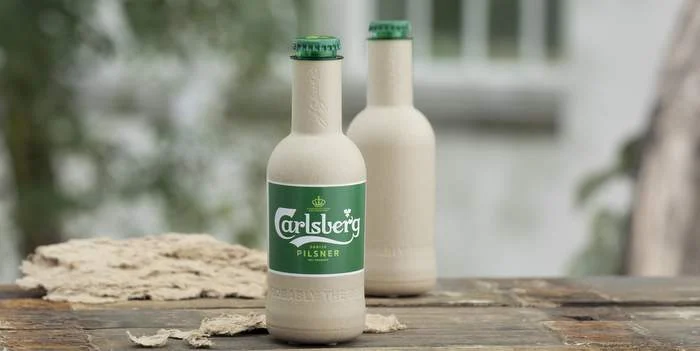7 Steps to Reduce Alcohol’s Environmental Footprint
By Beth Rush
Alcohol is a staple of modern society and is ingrained in many cultures. It’s everywhere—at weddings, social outings, and happy hours after work. Many people enjoy an occasional drink, but the cumulative effect negatively impacts the environment.
Consumers are becoming increasingly aware of their carbon footprint. About 95% of consumers take action to live sustainably, which can be applied to alcohol. Every step affects the planet, from the resources used to make it to the packaging. Making small changes can reduce alcohol’s impact and create a better future.
1. Choose Sustainable Ingredients
One of the most straightforward steps is to read your alcohol label. Pick brands that use local or sustainable ingredients in their process. While organic isn’t always better, you can find brands that use natural production processes and ethical sourcing.
Alcohol production involves fruits, grains, and materials that need water, land, and fertilizer. Using ingredients grown locally and with fewer chemicals cuts down on pollution. Pesticides and fertilizers can leach into the soil and water, harming ecosystems. Support sustainable farming practices to protect soil, water, and wildlife health.
2. Watch the Distillation Process
Water is one of the main parts of alcohol production. It takes an enormous amount of clean drinking water, and breweries and distilleries also use it to clean equipment. This intensive usage can strain local supplies and contaminate existing waterways. Choose brands that use less water during distillation, and alcohol with lower carbon footprints.
Many alcohol producers use water-saving techniques to reduce their footprint. Some breweries implement closed-loop systems, which recycle water instead of taking it from natural sources. Innovative practices can save water while protecting local supplies.
Consumers can help make this change. Choose companies that emphasize water sustainability. Look on their websites or labels to see how they highlight sustainability efforts. The more transparent they are, the more you can trust their practices.
3. Pick Eco-Friendly Packaging
Packaging is another area to focus on. Sustainability doesn’t stop at alcohol production. Packaging contributes to landfill waste, polluting the environment. Aluminum cans and plastic bottles require energy and resources to produce and are not always recyclable. The more metal and plastic you buy, the more trash ends up in landfills.
Buy sustainably with eco-friendly packaging. Look for companies that make lighter glass bottles, which take less energy to make and transport, or choose biodegradable or compostable bottles and cans. These materials eliminate waste and reduce aluminum and plastic use. Use these products alongside refillable growlers to cut down on single-use containers.
4. Support Sustainable Brands
Alcohol production involves a lot of energy. Brewing and distilling require heat, products need refrigeration, and everything needs transportation. This energy traditionally comes from fossil fuels, contributing to carbon emissions and causing climate change. Picking producers with sustainable practices can reduce your footprint.
Look for alcohol producers that combine eco-friendly packaging with renewable energy. Do your favorite brands use solar power for their operation? Are they partnering with renewable energy providers? Doing a little research can help you find more eco-friendly companies.
5. Buy Local
Shop local whenever you can. Many regional producers offer sustainable products to consumers. However, the main benefit of buying locally is cutting down on transportation. The farther alcohol has to travel to get to you, the higher its carbon footprint. Products sourced from far away also increase emissions before the alcohol even gets made.
Buying alcohol from nearby sources cuts down on the environmental cost of shipping. Plus, local producers are often more open about their practices. You can easily pick the most sustainable option without leaving your area. Local businesses also offer unique varieties, and buying them strengthens the region’s economy.
6. Look for Certifications
Certifications can point you in the right direction. For example, a Fair Trade stamp of approval tells you about a company’s practices. These certifications ensure brands use sustainable practices and treat workers fairly. They also prove a company is committed to sustainability. Shopping with them contributes to a greener culture, protecting the environment.
7. Reduce, Reuse, Recycle
Always remember to reduce, reuse and recycle — in that order. While you can buy beer and other alcohol with smaller footprints, reducing your intake is your best bet. Cutting down on drinking will reduce your personal impact and protect your health, while saving you money. Binge drinking is considered five or more drinks in one sitting for adult women or four or more drinks for adult men – the effect can add up quickly.
What is the environmental footprint of beer? Rye beer has the highest greenhouse gas emissions, with 870 grams of CO2 equivalent per kilogram. You could choose a wheat beer over rye, reduce your consumption, and start reusing packaging and recycling to protect the planet.
Make Sustainable Choices for a Greener Future
Your choices can impact the environment, from supporting local producers to selecting eco-friendly packaging. Being mindful of how you consume alcohol can lead to a better future for the planet. Research brands before buying and consider the environmental implications of your purchasing power. The steps you take to reduce alcohol’s footprint may seem small, but they add up over time.
About the author: Beth Rush is the green wellness editor at Body+Mind, where she covers topics like the power of climate consciousness at all stages of education. You can find Beth on Twitter @bodymindmag. Subscribe to Body+Mind for more posts by Beth!
